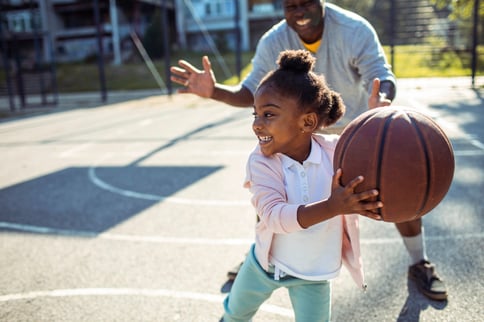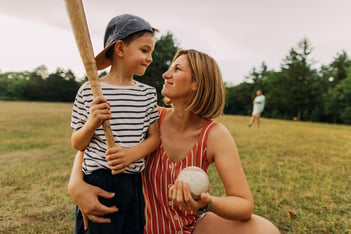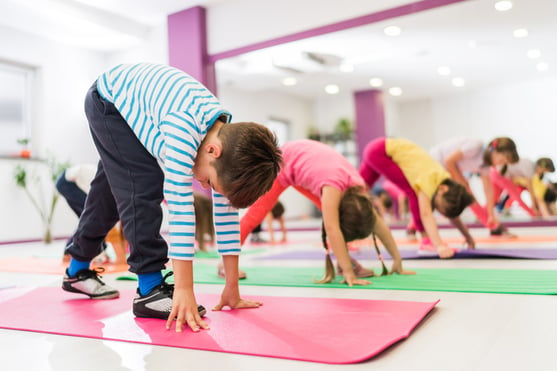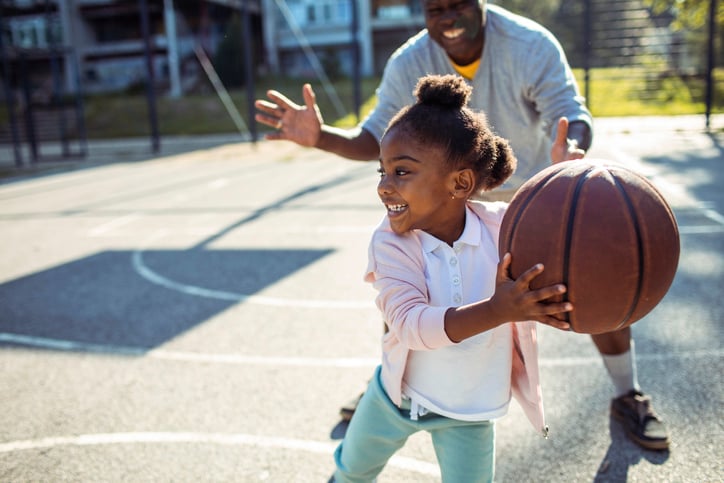Keeping Fit at Home: Exercise and Autistic Children
Benefits, Best Practices, Home Equipment Choices, and the Top Online Exercise Videos and Gaming Resources for Your Autistic Child
Exercise for autistic children can have both physical and psychological benefits. For many autistic children who have sensory integration issues, gyms, and playgrounds can be too overwhelming, and the experience can be stressful rather than fun and beneficial. Establishing exercise as a routine part of almost every day can lead to healthy habits that can last a lifetime -- for you, and for your child.
Benefits of Exercise for Autistic Children
Many autistic children experience delays in social-emotional development, motor coordination, and difficulty regulating emotions. Regular exercise can benefit children in all these areas.
-
Social Benefits
Many autistic children experience social delays due to difficulty communicating with peers. Exercise can act as a way for children to connect socially with peers. Participating in a team sport -- even when the team might consist of parents or siblings, practicing communication skills during gym games, or connecting virtually with players for a common goal, allows children an opportunity to practice interacting with and connecting with peers over a common interest or goal.
-
Emotional Benefits
Exercising can benefit autistic children who may experience difficulties regulating their emotions. Exercise requires individuals to focus carefully on their body movements and use of equipment. Many people enjoy exercise as a physical outlet for emotional feelings. Whether your child participates in a team sport or exercises independently at home, they will experience improved attention, concentration, and organizational skills. After exercising, your child will likely feel more emotionally regulated.

-
Behavioral Benefits
Fitness activities may require listening, patience, turn-taking, and self-regulation. Engaging your child’s whole body in fitness activities may also decrease repetitive behaviors, off-task behaviors, instances of self-injury, and aggression. Practicing these skills through fun sports and exercise will improve behavior, self-esteem, and confidence.
-
Gross Motor Skill Development
Gross motor skills involve movements of the arms, legs, and torso. Engaging in whole-body movements helps develop gross motor skills. Many autistic children are estimated to be six months behind in gross motor skill development compared to their peers. Regular exercises targeting gross motor skills such as jumping on a trampoline, playing hopscotch, swinging, climbing on a playground, or dancing are simple fitness activities that can benefit your child’s gross motor skills.
-
Fine Motor Skills Development
Fine motor skills involve movements of small muscle groups, like the hands, fingers, and eyes. Engaging in hand-eye coordinated movements helps develop fine motor skills. Many autistic children are estimated to be nearly a year behind in fine motor skill development compared to their peers. Regular exercises targeting fine motor skills such as soccer, boxing, handheld video game exercises, or juggling are simple fitness activities that can benefit your child’s fine motor skills.
The Best Practices for Involving Your Child in Exercise
-
Set realistic expectations.
Like any routine, if your child is new to exercise, getting used to following directions, moving new muscle groups, and making fitness a regular part of their schedule may take some getting used to. Be patient with yourself and your child as you explore appropriate fitness activities. There may be a lot of trial and error as you adjust to new things.
-
Offer choices.
Your child will feel more motivated to try new exercises when they are offered choices. Consider what interests them. Do they follow professional sports teams? Maybe practicing running the bases at a local baseball field or in your backyard would excite them. Perhaps they are fascinated by outer space, interactive video games that involve movement and virtual realities can transport them anywhere they want to travel. Communicating with your child about their likes, dislikes, and interests will help you discover fitness activities that are both fun and effective.
-
Exercise should be part of a routine. For many autistic children, having a schedule and feeling prepared for what is next is important. Decide how many times a week you’ll exercise and for how long, and put it on the calendar! This will keep your child accountable and prepared. Using visual cues or a visual schedule may benefit your child. For example, prompt your child, “It’s time for fitness!” and offer three images of three different fitness activities. Allow your child to make a selection of which activity they want to participate in, and use a timer so they don’t feel pressured to participate longer than anticipated. Create a schedule and use visual cues.
Create a schedule and use visual cues. -
Set goals.
One way to keep your child motivated is by setting goals. Perhaps they can successfully participate in exercise for ten minutes. Try to set a goal to add two minutes to the length of time they exercise until they reach their goal. Setting goals and slowly working towards them allows children to not feel overwhelmed and can improve the quality and lengths of their workouts.
-
Involve the whole family.
Fitness shouldn’t feel like a chore for your child. Invite family members and friends to get involved. Playing group sports, challenging a neighbor to a bean bag toss, or making a competition out of a sibling race, are all ways to involve the people your child loves and make fitness fun.
Equipment for the Home
-
Mat:
A yoga mat is a great addition to your home fitness equipment. Mats can come in different colors, textures, and thicknesses, so you can choose which your child prefers. Whether using it for yoga and stretching or practicing your long jump, a yoga mat is a versatile piece of equipment.
-
Stability Ball or Medicine Ball:
These large, inflatable balls come in different sizes and weights. Practice balancing skills, lifting, or working your legs while bouncing on the ball.
-
Exercise Bike:
Exercise bikes are a fun way to exercise. There are simple exercise bikes and some that come with interactive screens, “trails,” and virtual trainers. Using an exercise bike can be adapted to fit the needs and interests of any member of the family. Exercise bikes are for indoor use, so no matter where you live or what the weather is like, they’re always ready to use.
-
Resistance Bands:
Resistance bands can be incorporated into any stretch to strengthen and tone muscles. Usually, they can be purchased in sets, with different levels of resistance depending on your strength level. No matter what your strength level is, resistance bands are a great tool to incorporate into stretching routines.
-
Rope or Yarn:
Rope and yarn are a cost-effective addition to your home fitness equipment. It can be used to create obstacle courses, race paths, or as a makeshift balance beam, challenging your child to walk across it on their toes or backward. Involving rope and yarn in your fitness activities provides children an additional visual support.
-
Household Items:
A paper plate frisbee, bowling with soda bottles, hopscotch with some chalk, or tag are simple ways to use what you have on hand to create some fun, memorable fitness activities.

Online Exercise Resources
Autism fitness experts Coach Dave and Coach Ashley discuss strategies to create a successful autism fitness program.
-
“Autism in Children: Exercises to Help Toe Walking” (National Center on Health, Physical Activity, and Disability (NCHPAD)
Many autistic children walk on their toes. Watch Coach Dave and Coach Brody demonstrate three exercises that can help your autistic child reduce stress on the muscles caused by repetitive toe walking.
-
“Autism in Children: Exercises to Calm the Body & Improve Coordination” (National Center on Health, Physical Activity, and Disability (NCHPAD)
Follow along as Coach Dave uses visual supports and positive reinforcement to help an autistic adolescent practice foam roller exercises.
-
“Agility Ladder Exercises Benefit Autistic Children” (National Center on Health, Physical Activity, and Disability (NCHPAD)
Even if you don’t have a ladder, painter’s tape, or any visual outline on the ground, will do. Follow Coach Bill as he demonstrates various exercises using a ladder.
GoNoodle videos are colorful, energetic, and engaging exercises, dances, and movement breaks for your child to enjoy. Some videos are interactive, including music, and silly characters. A GoNoodle dance break or workout is sure to get the whole family laughing.
-
Yoga Videos
For autistic children, yoga can be a great regulating practice. Yoga practices can engage multiple senses at once and be easily adapted to suit your child’s specific needs. Some yoga practices are more active while others focus more on breathing and relaxation techniques. Check out a few yoga videos and explore what works best for your child.
--Introduction to Yoga for Autistic Kids
--A Grounding Yoga Practice for Autistic Kids
--Balance & Flexibility Practice for Autistic Kids
--Calming and Deep Relaxation for Autistic Kids
-
Gaming
Video game systems like the Wii, Kinect, and virtual reality consoles are an interactive way to get competitive energy out, enjoy some screen time, and get exercise at the same time. There are a variety of single-player and multiplayer games available. Play your favorite recreation activities virtually, compete in alternate realities, or have a dance party. With virtual gaming systems, opportunities are endless.
-
YouTube Videos
YouTube offers a free library of workout videos and tutorials. Simply search for what you are interested in and find a video that appeals to your child. Looking for a yoga or meditation session? Perhaps your child wants to learn a kickboxing routine. YouTube contains an endless collection of virtual coaches, activities, and videos.

This article was based on the following research and online resources:
https://www.youtube.com/watch?v=l68DaXPuyQ0
https://www.autismspeaks.org/physical-fitness
https://www.autismparentingmagazine.com/coronavirus-autism-home-activities/
https://exerciseright.com.au/exercising-for-kids-with-autism-what-parents-need-to-know/
https://www.autismparentingmagazine.com/exercise-can-benefit-autism-kids/
https://profectum.org/motor-development-autism-affects-motor-skills/





